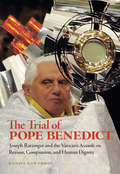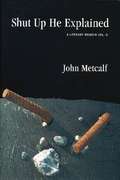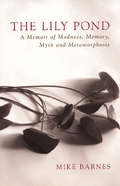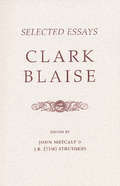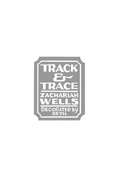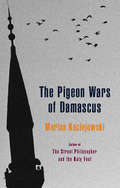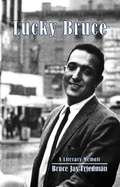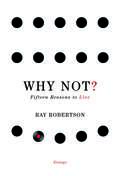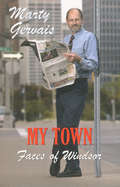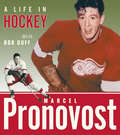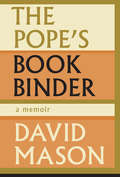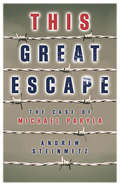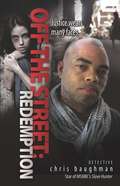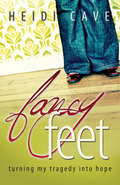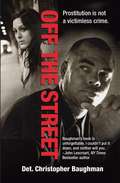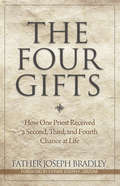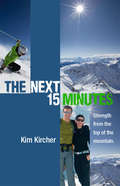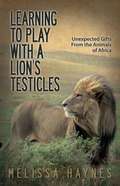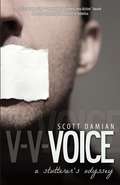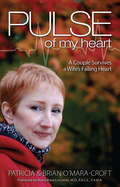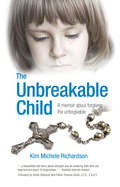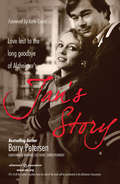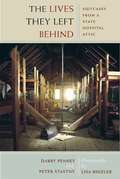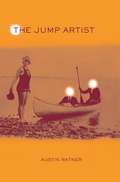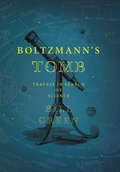- Table View
- List View
The Trial of Pope Benedict
by Daniel GawthropIn this persuasive new book, Daniel Gawthrop examines how Joseph Ratzinger (Pope Benedict XVI) systematically steered the Catholic Church to the far right, and what his shocking resignation means for the Church as it navigates a new world. By doing so, it reveals one of recent history's most astonishing tales of institutional power, religious bullying, and systemic abuse.
Shut Up He Explained
by John MetcalfJohn Metcalf's Shut Up He Explained defies expectations and strict definition. Part memoir, part travelogue, part criticism -- wholly Metcalf -- it is thoughtful, engaged, contentious and often very funny. It offers a full does of Metcalfian wisdom and wit, and provides ample evidence that neither age nor indifference nor attack have withered him: he remains as sharp, critical, constructive and insightful as ever. Indeed, this may just be his most important and engaged book. Certainly it will be among his most controversial. What his critics will refuse to see, of course, is that it is also among his most positive, that it is a celebration of the best literature Canada has to offer, the birth of which Metcalf himself both witnesses and actively encouraged. Shut Up He Explained is magisterial, a virtuoso performance melding several seemingly different strands into one coherent narrative, which should delight and entertain as it serves to argue, elucidate and celebrate.
The Lily Pond
by Mike BarnesA memoir that chronicles unflinchingly the destructiveness of bipolar disorder - an illness that infiltrates thinking, feeling and acting in ways that change the very fabric of identity, of the life story one is telling oneself; however, The Lily Pond is equally searching in its exploration of the psyche's resources in healing and reknitting that story.
Selected Essays
by Clark Blaise John Metcalf J. R. StruthersClark Blaise's Selected Essays brings together another aspect of his tremendous and courageous oeuvre: belle lettres, essays and occasional pieces which range over autobiography, his French-Canadan heritage, the craft of fiction, American fiction, Australian fiction, and the work of such individual writers and Jack Kerouac, V.S. Naipaul, Salmon Rushdie, Alice Munro, Leon Rooke, and Bernard Malamud, his friend and mentor.
Track & Trace
by Seth Zachariah WellsThe poems in Zachariah Wells's second collection range from childhood to dimly foreseen events in the future; they idle on all three of Canada's coasts, travel the open road, take walks in the city and pause on the banks of country streams and ponds.
The Pigeon Wars of Damascus
by Marius KociejowskiMarius Kociejowski follows up his now classic The Street Philosopher and the Holy Fool with The Pigeon Wars of Damascus. A metaphysical journalist in search of echoes rather than analogies, hints as opposed to verities, Kociejowski discovers once again at the periphery of Damascene society-for the outcast is often made of the very thing that rejects him-a way to understand the challenges and changes refashioning post-9/11 Syria and the Middle East, reminding us once again of the deeper purpose of travel: to absorb and understand the spirit of a place, and to return changed.
Lucky Bruce
by Bruce Jay Friedman"Like a Twilight zone with Charlie Chaplin"-Mario PuzoWriter, screenwriter, playwright, editor, actor, teacher: Bruce Jay Friedman has done it all, charming the glitziest industries of American golden-age culture for more than half a century. Lucky Bruce is his long-awaited memoir, and it's everything we'd expect and more: here is Friedman at his best, waltzing from Madison Avenue to Hollywood and back again, and reilluminating with brilliant clarity the dazzle of post-war American life.Self-effacing, wry, sharp, and laugh-out-loud funny, Friedman details with lovable candor his friendships and rivalries with the greatest writers, actors, publishers, directors and personalities of the last fifty years. He stands shoulder-to-shoulder with Steve Martin and Woody Allen. He's a dynamo of comedy and a recognized master of American letters. And in Lucky Bruce, whether he's fist-fighting with Norman Mailer, explaining to Richard Pryor why there are so few Jewish junkies, or writing screenplays in a closet with Natalie Wood as his secretary, Friedman is the king of understated charm. With cameos by Joseph Heller, Philip Roth, Mario Puzo, Lillian Hellman, Warren Beatty, Marlene Dietrich, Brian Grazer, Candida Donadio, Crazy Joe Gallo, Joyce Carol Oates, Jack Richardson, Isaac Bashevis Singer, Kurt Vonnegut, and the irreplaceable Elaine, Lucky Bruce is moving, scandalous, and guaranteed to shed new light on the brightest of American luminaries ... with Bruce Jay Friedman bright among them.Bruce Jay Friedman is a best-selling author, an Academy Award-nominated screenwriter, a magazine editor, a Hollywood actor, and a celebrated playwright. He lives in Manhattan, New York.
Why Not?
by Ray RobertsonFeatured on The Hour with George Stroumboulopoulos.SHORTLISTED FOR THE $60,000 HILARY WESTON WRITERS' TRUST PRIZE FOR NONFICTIONLonglisted for the $25,000 Charles Taylor Prize for Literary Non-Fiction."Clear-eyed ... Robertson is no stranger to confronting unsavoury truths."-Steven Beattie, That Shakespearean Rag"Many of us sense that the world has too many moving parts and can become utterly defeated. Ray Robertson found a 'road back' in this splendid and intriguing book." -Jim HarrisonShortly after completing his sixth novel, Ray Robertson suffered a depression of suicidal intensity. Soon after his recover, he decided to try and answer two of the biggest questions we can ask. What makes humans happy? And what makes a life worth living?His answers aren't what you might expect from a mental illness memoir-but they're exactly what you'd expect from Ray Robertson. With the vitality of Nick Hornby and a brashness all his own, Robertson runs his hands over life, death, intoxication, and art. Unashamedly working-class and unabashedly literary, Why Not? is a rolling, rocking, anti-Sisyphean odyssey.Ray Robertson is the celebrated author of eight books and six novels, including What Happened Later, about Jack Kerouac's last years. He lives and writes in Toronto, Ontario.
My Town
by Marty GervaisMy Town brings together more than 70 snapshots of the people and places that have called Windsor home. More than this, they have made Windsor, for better and for worse, the city it is today. Some of these faces you will recognize; others will have slipped beneath the radar. Marty has sought them out and made their stories his own.
Marcel Pronovost
by Marcel Pronovost Bob Duff"Marcel was the most underrated defenceman ever to play in the league. When he hit you, you were hit. He was a tremendous skater and defensively, he was as good as anyone. He might have been overlooked by the press, but he was never overlooked by his teammates. Years later, I brought him back to Detroit as a coach. He is very knowledgeable and a very astute observer of the game."-Hall of Fame left-winger Ted Lindsay (Pronovost's teammate from 1949-57 and 1964-65)In the spring of 1950, Marcel Pronovost was called up from the minor leagues to play for the Detroit Red Wings during the Stanley Cup playoffs. The 18-year-old defenceman had never seen NHL ice time before, but his performance in the playoffs was so impressive that he took regular turns in the final series against the New York Rangers. That year, Marcel Provonost became the ninth player in history to win a Stanley Cup before playing a single regular-season NHL game.So began Pronovost's 65-year career in pro hockey. As a Red Wing he became a star defenceman in Detroit's golden age, winning three more Stanley Cups between 1952 and 1955, and skating side-by-side with Gordie Howe, Ted Lindsay, and Terry Sawchuk (who became a lifelong friend). He played a pivotal role in the Toronto Maple Leafs' last Stanley Cup win in 1967. He earned recognition on the NHL's First and Second All-Star Teams. And he has continued to serve the game for decades, becoming one of the few NHLers to have success as a player, a coach, and as a scout.Now, with Marcel Pronovost: A Life in Hockey, this legendary defenceman and Hockey Hall of Famer tells these and other stories for the first time. With over 125 photos and with on-the-ice recollections from the most exciting Original Six Era games ever played, A Life in Hockey is a hard-hitting memoir, and an insider's take on playing, coaching, and scouting that spans seven decades, and surveys one of the longest hockey careers of all time. A must-have autobiography for Red Wings fans, Leafs fans, and hockey buffs everywhere.
The Pope's Bookbinder
by David Mason"Entertaining, moving, informative, intelligently hopeful: I know of few other books like this one to warm the cockles of a booklover's heart." -Alberto Manguel"For anyone who loves books too well-who lusts after them, lives in them, mainlines them-David Mason's memoir will be a fix from heaven. Heartful, cantankerous, droll, his tales of honour and obsession in the trade gratify the very book-love they portray. An irresistible read." -Dennis Lee"An atmospheric, informative memoir by a Canadian seller of used and rare books ... Gossipy, rambling and enchanting, alive with Mason's love for books of every variety."-Kirkus ReviewsFrom his drug-hazy, book-happy years near the Beat Hotel in Paris and throughout his career as antiquarian book dealer, David Mason brings us a storied life. He discovers his love of literature in a bathtub at age eleven, thumbing through stacks of lurid Signet paperbacks. At fifteen he's expelled from school. For the next decade and a half, he will work odd jobs, buck all authority, buy books more often than food, and float around Europe. He'll help gild a volume in white morocco for Pope John XXIII. And then, at the age of 30, after returning home to Canada and apprenticing with Joseph Patrick Books, David Mason will find his calling.Over the course of what is now a legendary international career, Mason shows unerring instincts for the logic of the trade. He makes good money from Canadian editions, both legitimate and pirated (turns out Canadian piracies so incensed Mark Twain that he moved to Montreal for six months to gain copyright protection). He outfoxes the cousins of L.M. Montgomery at auction and blackmails the head of the Royal Ontario Museum. He excoriates the bureaucratic pettiness that obstructs public acquisitions, he trumpets the ingenuity of collectors and scouts, and in archives around the world he appraises history in its unsifted and most moving forms. Above all, however, David Mason boldly campaigns for what he feels is the moral duty of the antiquarian trade: to preserve the history and traditions of all nations, and to assert without compromise that such histories have value. Sly, sparkling, and endearingly gruff, The Pope's Bookbinder is an engrossing memoir by a giant in the book trade-whose infectious enthusiasm, human insight, commercial shrewdness, and deadpan humour will delight bibliophiles for decades to come.
This Great Escape
by Andrew SteinmetzSHORTLISTED FOR THE $60,000 HILARY WESTON WRITERS TRUST PRIZE FOR NONFICTION"What the hell kind of great escape is this? No one escapes!"-L.B. Mayer, on the 1963 filmHe had fifty-seven seconds of screen time in the most lavish POW film Hollywood ever produced. He was blond. A Gestapo agent. Sauntering down the aisles of a speeding train, he speaks in terse German to Richard Attenborough, Gordon Jackson, David McCallum. The film is The Great Escape (by John Sturges, starring Steve McQueen); the actor, though uncredited, is Michael Paryla. He was part Jewish. Shortly after filming he died.In This Great Escape, Andrew Steinmetz tenderly reconstructs the life of a man seen by millions yet recognized by no one, whose history-from childhood flight from Nazism to suspicious death twenty years later-intersects bitterly, ironically, and often movingly with the plot of Sturges's great war film. Splicing together documentary materials with correspondence, diary entries, and Steinmetz's own travel journal, This Great Escape does more than reconstruct the making of a cinema classic: it is a poignant and moving testament to the complexity of human experience, a portrait of a family for whom acting was a matter of survival, and proof that our most anonymous, uncredited, and undocumented moments can brush against the zeitgeist of world history.
Off the Street: Redemption
by Christopher BaughmanSometimes justice takes a different path.For a hard-charging detective in the Pandering Investigative Team (PIT), deliverance comes in the manner of long prison sentences, humiliation, and bankruptcy for the animals who subjugate, beat, and torture women into selling their bodies, while reaping all the financial rewards. With that single-minded goal, Las Vegas detective Chris Baughman finds frustration and dead ends as he and his team work countless hours hunting down someone from his past - Mario Davis, a promising athlete whose bright future takes a sadistic U-turn. Helping Chris are two young women from Davis' stable of ten, who reach out to Chris for rescue after Mario severely beats them. Chris picks up the chase to find and finish Mario off for good, gratis of the Las Vegas penal system.But justice is complicated, and Chris fears the case is slipping through his fingers when the two women fear testifying against Mario. After being brutalized numerous times, there is still a shred of loyalty. No matter how frustrated Chris is, he knows he can't ask them to put their lives at further risk. Through countless hours and too many sleepless nights, he fears Mario will go free and there will be no justice for the victims. The tough lesson Chris must face is that his job offers a different kind of deliverance and rescue that is far more powerful and encouraging.As head of the Pandering Investigation Team and Human Trafficking Task Force, Christopher Baughman has changed the culture and scope of the crimes they investigate. He has arrested several of the wealthiest and most violent criminals in Las Vegas. This success caught the attention of investigative reporter Chris Hansen of Dateline NBC's To Catch a Predator. Chris teaches the anatomy of pandering investigations to other departments across the nation, including members of the FBI and IRS, as well as federal parole and probation officers.
Fancy Feet
by Heidi CaveA team of firefighters fought to save Heidi's life after a horrific accident that killed her best friend, burned over 53 percent of Heidi's body, and claimed both her legs. The following year followed countless surgeries, surviving, pain management, fighting, and loss. Until she finally faces the driver who changed her life, Heidi realizes she has one last hurdle: forgiveness.Heidi Cave is a well-respected advocate for burn survivors and amputees, and serves on a board of advisors for the BC Professional Fire Fighters' Burn Fund's efforts to build a research laboratory and treatment center in Vancouver.
Off the Street
by Christopher BaughmanI couldn't put it down, and neither will you.--John Lescoart, New York Times best-selling author of the Dismas Hardy Novels and The Hunt Club Off the Street is detective Christopher Baughman's true life story of fighting to protect a class of women who are too easily forgotten and readily dismissed. Chris and the Las Vegas Pandering Investigation Team (PIT) wage war against the pimps who kidnap, trick, and beat women into submission and into a life of prostitution. What begins with an attempt to apprehend, arrest, and convict a pimp responsible for beating a woman with a baseball bat over a two-day period quickly spirals into something far more sinister. Chris shares the emotions of the victims, parents, and family members who are involved in this investigation and offers parents guidance on how to protect their daughters from these predators. Chris ventures back to his own youth, to a memory that served as the momentum for his passion for saving the people and the city he has sworn to protect.
The Four Gifts
by Joseph BradleyBy all rights, Father Joseph Bradley should be dead. If past usage of beer, marijuana, and cocaine didn't do the trick, then certainly heart failure should have. Instead, by the grace of God, he is alive, clean, sober, and a functioning Catholic priest with another man's heart beating in his chest. But it came at a huge cost. While Joe was in his late teens, his father died suddenly. The loss was devastating and Joe's emotional desolation found escapist bliss in a beer bottle and cocaine vial, and he pledged irrevocable devotion to both. The slide into the abyss was ugly, and Joe finally sought help because there was nowhere else to go--which led him to serve others as a Catholic priest. The day of Joe's ordination, an old friend came to the mass and announced for all to hear, "Well, now I can say I've seen a miracle." Joe functioned for fifteen years as a sober priest before his heart gave out from the same heart disease that killed his father. But another miracle came his way, and he was blessed with a new heart--a gracious gift from a family during the most painful moment of their lives. Joe has been granted the blessing of four gifts: faith, sobriety, a new heart, and a fulfilling ministry. As Father Joe says, "Gratitude inspired this book. I owe it to people who helped rescue me from alcohol and drugs, and I owe it to my heart donor for giving me yet another chance at life."
The Next 15 Minutes
by Kim KircherKim Kircher's husband's illness wasn't something she could blow up as she had done countless times on the ski slopes during avalanche control. Instead, Kim faced the biggest double black diamond ski run of her life as she listened to the doctors put her husband on the transplant list while he fought bile duct cancer.The Next 15 Minutes is Kim's high octane story of how she drew strength from her life among the ski slopes and of the daring world that showed her how to survive and fight back.Kim Kircher has been an EMT with avalanche control at Crystal Mountain, Washington, for twenty years.
Learning to Play With a Lion's Testicles
by Melissa HaynesThe cheeky title of Melissa Haynes's story of adventure in Africa, Learning to Play with a Lion's Testicles, earned the book some big publicity on NBC-TV/Late Night with Jimmy Fallon on September 4,2013 where it topped the show's list of "Titles Not to Read" for September 2013. Melissa's book was also a big smash on the March 11, 2014 Ellen Show, where Ellen and guest Ricky Gervais highlighted the book throughout the entire hour. Playing with a lion's testicles: An African saying that means to take foolhardy chances.Melissa, an exhausted executive from the city seeks meaning and purpose from her work, and volunteers for a Big Five conservation project in South Africa. Her boss, an over-zealous ranger, nicknamed the Drill Sergeant, has no patience for city folk, especially if they're women, and tries to send her packing on day one. But Melissa stands her ground with grit and determination, however shaky it may be.Conflict soon sets the pace with a cast filled with predatory cats, violent elephants, and an on-going battle of wits with the Drill Sergeant. Even Mother Nature pounds the reserve with the worst storm in a century. But the most enduring and profound conflict is the internal battle going on within Melissa, as she tries to come to terms with the guilt surrounding her mother's death. When death grips the game reserve, it is the very animals Melissa has come to save that end up saving her.For the reader who has ever dreamed of going to Africa or knows the pain of loss and guilt, LEARNING TO PLAY WITH A LION'S TESTICLES will fill your soul.
Voice
by Scott DamianFor thirty-three years, Scott Damian fought an arduous battle for freedom from stuttering. He was imprisoned by the terror of being unable to utter a single word, until he transformed into a highly successful actor and writer. Scott speaks to the heart and soul of a stutterer, and addresses healing, help, and hope for the millions who are similarly afflicted.
Pulse of My Heart
by Brian O'Mara-Croft Patricia O'Mara-CroftPatty O'Mara-Croft's "widowmaker" heart attack was a cruel assault on her body, threatening the happiest years of her life. Originally misdiagnosed as a panic attack, common among women who suffer heart attacks, Patty's heart suffers permanent damage, and her precarious condition threatens to raze all joy and hope between Patty and her husband, Brian. In a recounting both informative and inspirational, heartbreaking and funny, Patty and Brian share their stories from their own unique perspectives--the first-person account of painful revelations and medical struggles and a loved one's experience of despair, hope, and renewal. Families in medical crisis are getting sucker-punched every day and need help from those who overcame it and emerge stronger than before. The dual voice of both authors represents a love that flourishes, even as Patty's health weakens and is no longer a viable candidate for a heart transplant. Pulse of My Heart is part medical mystery, part comedy of errors, part family drama, and an enduring love story. The field notes at the back of the book focus on: The sometimes-strained relationship between doctors and patient Preparing for anticipatory grief The potential for addiction when narcotics are part of the drug protocol Dealing with familial strife during a time of need Struggling with others' prayers when one's own faith is strained Trying to maintain some level of dignity in an utterly undignified environment Finding ways to be an effective parent in a blended family when illness demands so much attention
The Unbreakable Child
by William F. Mcmurry David Clohessy Kim Michele Richardson Father Thomas Doyle, J.C.D., C.A.D.C.Kim Richardson's story of surviving abuse at the hands of the Catholic nuns of Kentucky's St. Thomas/St. Vincent Orphanage, and later joining the class action suit brought by forty-four survivors, including her two sisters, which ended in victory. This book is about hope, justice, and ultimate forgiveness.
Jan's Story
by Katie Couric Barry PetersenWhen CBS News Correspondent Barry Petersen married the love of his life twenty-five years ago, he never thought his vow, "until death do us part," would have an expiration date. But Early Onset Alzheimer's claimed Jan Petersen, Barry's beautiful wife, at 55, leaving her unable to remember Barry or their life together.
The Lives They Left Behind
by Robert Whitaker Darby Penney Peter Stastny Lisa Rinzler"The Lives They Left Behind is a deeply moving testament to the human side of mental illness, and of the narrow margin which so often separates the sane from the mad. It is a remarkable portrait, too, of the life of a psychiatric asylum--the sort of community in which, for better and for worse, hundreds of thousands of people lived out their lives. Darby Penney and Peter Stastny's careful historical (almost archaeological) and biographical reconstructions give us unique insight into these lives which would otherwise be lost and, indeed, unimaginable to the rest of us."--Oliver Sacks, M.D., Professor of Neurology and Psychiatry, Columbia University Medical Center, Columbia University Artist, and author of Musicophilia "The haunting thing about the suitcase owners is that it's so easy to identify with them."--Newsweek "In their poignant detail the items helped rescue these individuals from the dark sprawl of anonymity."--The New York Times "[The authors] spent 10 years piecing together . . . the lives these patients lived before they were nightmarishly stripped of their identities."--Newsday More than four hundred abandoned suitcases filled with patients' belongings were found when Willard Psychiatric Center closed in 1995 after 125 years of operation. They are skillfully examined here and compared to the written record to create a moving--and devastating--group portrait of twentieth-century American psychiatric care.
The Jump Artist
by Austin RatnerSami Rohr Prize for Jewish Literature"A remarkable work . . . [that] documents a triumph of the human spirit over tremendous adversity."-Harper's"This elegantly-written tribute makes as beautiful a use of the darkness and light of one man's life as a Halsman photograph of a pretty young woman."-GQ"Ratner weaves a psychologically arresting fiction from these facts, imagining the creep of Nazism in 1928 Europe."-Cleveland Plain Dealer"A beautifully scrupulous, intricately detailed novel about joy and despair, anti-Semitism and assimilation, and like a great photograph, it seems to miss nothing, and to catch its subject in all his complexity."-Charles BaxterPhilippe Halsman is famous for his photographs of celebrities jumping in the air, for putting Marilyn Monroe (among countless others) on the cover of Life Magazine, and for his bizarre collaborations with surrealist Salvador Dalí ("Dalí Atomicus," Dalí's Mustache). What is not well known is his role in the "Austrian Dreyfus Affair," which rocked Europe in the years leading up to WWII. While hiking in the Tyrolean Alps, Philippe's father was brutally murdered when Philippe went ahead on the trail. The year was 1928, Nazism was on the rise and Philippe, a Jewish 22 year old from Latvia, was charged with the murder. He spent several years in an Austrian prison and the trial became a public scandal that pitted many prominent intellectuals, including Albert Einstein and Sigmund Freud, against the rising tide of fascism.The Jump Artist is evocative psychological fiction based on this true story. Austin Ratner has extensively researched Halsman's life and tells the extraordinary tale of a man who transforms himself from a victim of rampant anti-Semitism into a purveyor of the marvelous.
Boltzmann's Tomb
by Bill GreenA selection of the Scientific American book clubRecommended by MSNBC, Los Angeles Times, & American Association for the Advancement of Science's SB&F magazine"This wonderful scientific memoir captures the romance and beauty of research in precise poetic prose that is as gorgeous and evocative as anything written by Rilke, painted by Seurat, or played by Casals." -Mary Doria Russell, author of Doc and The Sparrow"A radiant love letter to science from a scientist with a poet's soul . . . Green is an exquisite writer, and his fierce focus and mastery of style are reminiscent of the biologist and essayist Lewis Thomas." -Kirkus ReviewsIn Boltzmann's Tomb, Bill Green interweaves the story of his own lifelong evolution as a scientist, and his work in the Antarctic, with a travelogue that is a personal and universal history of science. Like Richard Holmes' The Age of Wonder-this book serves as a marvelous introduction to the great figures of science. Along with lyrical meditations on the tragic life of Galileo, the wildly eccentric Tycho Brahe, and the visionary Sir Isaac Newton, Green's ruminations return throughout to the lesser-known figure of Ludwig Boltzmann. Using Boltzmann's theories of randomness and entropy as a larger metaphor for the unpredictable paths that our lives take, Green shows us that science, like art, is a lived adventure. Bill Green is a geochemist and professor emeritus at Miami University in Oxford, Ohio. He is also the author of Water, Ice & Stone: Science and Memory on the Antarctic Lakes which received the American Museum of Natural History's John Burroughs Award for Nature Writing, was a finalist for the PEN/Martha Albrand Award, and was excerpted in The Ends of the Earth: An Anthology of the Finest Writing on the Arctic and the Antarctic, edited by Elizabeth Kolbert.
